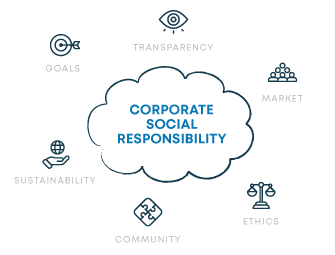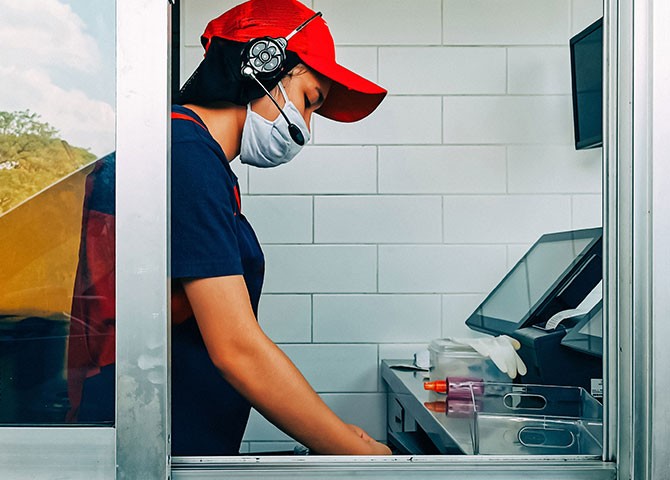Reinvigorating Retail: The 3 Strategic Essentials Your Business Plan Needs to Thrive

The rundown
- The post-pandemic landscape is nowhere near defined, but your business doesn’t have the luxury of staying stagnant without an updated retail strategy
- Retail job losses saw some of the worst of that fallout — more than 114,000 retail workers lost their jobs in the first four months of 2020, and ever since, retailers have been struggling to hire enough employees
- The end goal remains the same — to adjust to the new normal – and leaders need to reevaluate where they’re allocating resources
- Customers are more important than ever – authentic shopping experiences are attributed with boosting customer satisfaction scores as much as 35%
- Meet your employees and your customers where they are “at” in this new reality – and work to build a new foundation for retailers of the future
Table of contents
- The post-pandemic retail landscape
- Implement employee return-to-work & retention plans
- Determine whether to shift your business operations
- Improve customer communication & corporate social responsibility
- Build a new foundation for retailers of the future
- About interviewstream
The post-pandemic retail landscape
Retailers are struggling to navigate an unfamiliar market after the coronavirus pandemic caused a complete upheaval of countless long-term business strategies. The uncertainty of operational success is a large enough burden to bear, and that stress is only compounded by the daily news of lay-offs, store closings, and even bankruptcies from big names, including Nordstrom, JCPenney, and Bed Bath and Beyond.

The post-COVID retail landscape is nowhere near defined, but your business doesn’t have the luxury of staying stagnant. Here are the three essential elements for successfully rebuilding your retail strategy and business plan.
Implement employee return-to-work & retention plans (and start remote hiring)
It feels like a relatively unstable time to be a non-essential employee — at the height of the pandemic, nearly 15% of the U.S. population was out of work and retail job losses saw some of the worst of that fallout – more than 114,000 retail workers lost their jobs in the first four months of 2020, and now that retailers are hiring, workers are reluctant to return to work.
Workers feel disregarded and in order to entice them to come back to a still-fluctuating industry, return-to-work protocol and a strong employee retention plan need to be put in motion. These initiatives not only attract stronger candidates, they also decrease turnover, increase revenue, and improve company culture.
Re-earn employee trust by increasing general and COVID-specific support, like:
- Paid sick and family leave
- Actionable worker’s comp information and resources
- Proactive and published plans for future furloughed or laid-off workers
- Skill-building and educational resources
- Employee recognition programs
- Masks, no-touch thermometers, and hand sanitizer
In addition to helping your teams return to work, the reality is that you won’t be able to bring them all back. You will also need to establish a strong remote hiring practice. With so many candidates available and social distancing guidelines in place across the country, hiring presents a new set of challenges. Major players like Amazon, who alone has hired over 100,000 workers during the pandemic, turn to remote interviewing software to simplify and streamline their hiring processes.
With platforms like interviewstream, you can complete remote interviews more quickly and more effectively than any past hiring solution. Your team can easily schedule, execute, and follow up on interviews so that, regardless of where your organization is headed next, you’ll be able to put together the best possible team to get you there.
Interested in our HR newsletter? Sign up below!
Sign up for our newsletter – we send out an email every 6 weeks which includes HR trends, industry-relevant knowledge, and the latest interviewing tips for recruiters and candidates.
Determine whether to shift your business operations
Next, you have to determine which aspects of your operations are working well and which aren’t quite hitting the mark. While business development strategies differ between brick and mortar and online retailers, the end goal remains the same — to adjust to the new normal, leaders need to reevaluate where they’re allocating resources. Each requires a unique approach:
Brick and mortar stores: Prior to the pandemic, 85% of purchases occurred in-store. Today, consumers still prefer shopping at physical stores over online, especially when they’re searching for a specific type of item. 68% of shoppers are spending more or the same amount in-store as before.
Most businesses today have a small online business presence as part of their retail strategy. Now, it’s time to weigh the costs and benefits of investing more heavily in an online store (or transitioning to e-commerce altogether). Consider other options, like curbside pick-up options, and the potential impact that such a transition is bound to have on your functionality, brand recognition, and customer base.

Online retailers: Quarantine has triggered new shopping behaviors, driving both digital sales and competition. While 31% of adults prefer ordering online to visiting a physical store, a majority of the market isn’t ready to give up the in-person shopping experience completely. As non-essential businesses begin to reopen across the nation, another wave of change is coming for retailers.
One way to meet changing consumer needs is by investing in warehouse management software. The solutions are tailored to address a wide range of challenges, like inventory visibility to assist the one-third of businesses that miss shipment deadlines because they unintentionally sold an item that wasn’t actually in stock. e-commerce companies around the world leverage the software to fine-tune order fulfillment, enhance security, and optimize transport logistics.
Improve customer communication & corporate social responsibility
It’s time to reinforce the foundation of your business – do you still have the same values and intentions today that you did pre-pandemic?
Your investors, employees, and consumers need to have a clear understanding of exactly what customers are buying when they purchase your product today. Staying silent with so many societal changes happening in our world is no longer an option. Corporate social responsibility has evolved from an employee retention strategy to a necessity for long-term business success.
For example: Patagonia received an unexpected $10 million tax cut in 2018. In response, the outdoor clothing retailer put their money where their mouth was, donating the entire sum to fight for the environmental resources that inspired its foundation back in the early 70s. To be fair, that’s a pretty extreme scenario, but the sentiment remains — actions speak louder than words.

You should consistently remain transparent about the challenges facing your business and the world: share action plans for your retail strategy development, regularly update the status of these initiatives, and clarify how each member of the organization plays into them. From execs to distribution workers, informing your colleagues about the role that they’re responsible for in the organization increases employee buy-in, resulting in higher retention rates and a more positive corporate environment for all.
Your work doesn’t end there — your customers need to stay informed too. Authentic shopping experiences are attributed with boosting customer satisfaction scores as much as 35%. Alongside standard messaging, keep the public in the know about what you’re up to behind the scenes. The more invested they are in your journey, the more likely they are to support (and spread the word about) your organization and mission.
Build a new foundation for retailers of the future
Revamping your retail strategy is exciting (and scary) however so is the idea of standing still in a world that is constantly evolving. Knowing that you are looking for new ways to steer your business, hopefully these three strategies will guide you down the path to success. As customers return to stores, you begin to see new business coming in and the retail landscape continues to evolve, all businesses- small and large are going to have to remain agile.
The landscape for retailers is not yet defined– and it may take a while for that to happen. Help begin to define that landscape by taking control and driving your business towards success through improved customer communication, setting up your business operations for success, and ensuring you have a strong workforce in place. Meet your employees and your customers where they are “at” in this new reality – and work to build a new foundation for retailers of the future.
About interviewstream
interviewstream is an industry leading recruiting software company that helps you reach your top candidates more effectively. Our customers have completed over 3 million interviews using interview builder, interview on demand, interview scheduler, interview connect – and we’d love to help you as well. Talk to an expert today to learn how to get started.
Want a PDF version of this eBook?
Submit your email and we’ll send the eBook straight to your inbox.
The interviewstream platform
Speak to an expert today to learn how our remote interviewing solutions make hiring more effective.
About interviewstream
As companies transition to remote work, we exists to help recruiters and hiring teams ask the right questions every time, screen candidates faster, make scheduling easier and reach candidates everywhere. Using our remote interviewing platform, your team will have a complete view of the candidate in one location while also leveraging one of the leading platforms for online interviewing.



